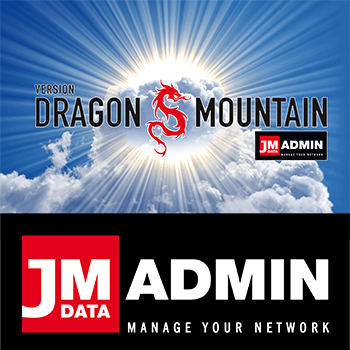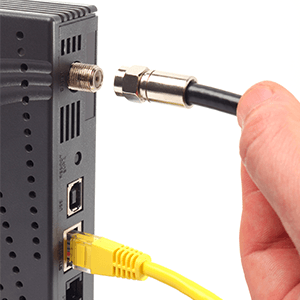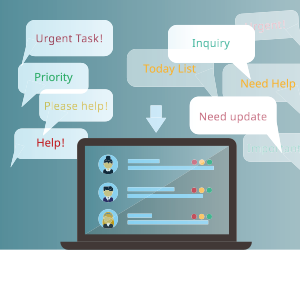JM-DATA ADMIN


ALL IN ONE
Provisioning and Customer Management Solution
for cable-, fiber-, Wireless- or/and xDSL-operator
JM-DATA ADMIN is software developed by JM-DATA GmbH that facilitates central administration and monitoring for Internet service providers. The provisioning software, Made in Austria, administers network typologies and monitors independently. Simple and intuitive operation makes working with JM-DATA ADMIN easier for customers.
The software is suitable for a diversity of areas of application, which apart from engineering can also include call centres, back offices and helpdesks. You thus receive a clear and constant overview of your customers and network. Starting at 150, JM-DATA ADMIN offers an unlimited number of cable modems and hence perfect scalability even with various locations. JM-DATA ADMIN can therefore grow with your company and the JM-DATA portfolio is rounded off with 24×7 support.

Cable Operator (DOCSIS)
Provisioning involves the administration and management of DOCSIS devices. All the current DOCSIS standards from DOCSIS 1.0 to DOCSIS 3.1 are supported and integrated into the system, as are all the services required for complete provisioning such as DHCP, DNS, TFTP and Time Server. The Docsis modems are administered in nodes, which form the physical HF network. Moreover, structural nodes can be used to combine several network areas, which means that Docsis modems are able to log CMTS independently. This facilitates the alteration of physical networks and allows superordinated CMTS load balancing. Extremely flexible services can be defined in CN-ADMIN. Data limit rules from accounting are also incorporated on a cross-module basis. The name servers are linked to the DHCP services and therefore are always available with the necessary FQDN resolutions for dynamic and static IP addresses.
Wireless/xDSL/FttH Radius Operator with PPOE/PPTP
Various network access servers (NAS) can be employed via the Radius protocol. The standardized provisioning of widely differing network typologies such as optical networks, DSL, wireless and Ethernet is foreseen.
The Radius server can also be linked to our DHCP services. Predefined surfing packages and profiles are allotted to the radius account, in order to display a diversity of services.
Provisioning
A brand-new function enables users to create their own data records. The benefit for the end customer is that the cable operator can assign individual domain names via the integrated DNS. This is a service that business customers in particular appreciate. The TR-069 module facilitates communication with customers because the provider can configure their modems by remote access. New customers thus get their Internet access more quickly. The two standards, Packet Cable and SIP, are supported. Docsis modems with an integrated MTA from various different manufacturers can be managed with ease in a uniform system. A Config File Builder is integrated for simple configuration.
Accounting
The processing of Docsis and Radius accounting data is included in the program and evaluation up to the individual service flows is possible for the Docsis modem. As a result, local traffic or VoIP data for example can be counted separately from Internet traffic
IP records (IP addresses)
A record is kept of when all dynamic and static IP addresses were allocated to which customer device. On a defined date, this information is then transferred automatically to retentive storage.
Monitoring
In monitoring, data that is technically relevant is collected every five minutes – not only from central routers and switches, but also from all Docsis modems. This data is archived centrally in a database. The statistical data can be retrieved at any time and can be displayed in tabular or graphical form. Weekly, monthly, biannual and annual statistics are available for trends and long-term evaluations. Users can now monitor all of the systemrelevant processes without additional effort or software.
Online surveillance
Online surveillance is used for the monitoring of network devices. The results are recorded in protocols and status changes noted correspondingly in the system log. This information can also be called up via automatic notification per e-mail.
Automatic notification
Depending on the setting, automatic notification can send important entries from the system log to defined mail addresses. This can take place immediately or in the form of a daily status report.
Customer administration
Customer administration contains basic client data such as names, addresses, contact possibilities, personal particulars and bank accounts. Contracts, Docsis modems and Radius accounts are all-ocated to every customer.
Contract administration
Contract administration bundles individual customer services. Docsis modems, Radius accounts, telephone numbers and mailboxes are all included. A contract forms the basis for optional invoicing.
Invoicing
The user generates recurring invoices on the basis of the data from contract admi- Customer management per mouse click NEW nistration. Contracts also include one-off costs such as registration and deregistration charges. Internet consumption data also flows into invoicing via the integrated accounting module, while CDR import incorporates telephone connection charges.
Customer web interface
End customers obtain access to their current services and consumption data via their own login.
Mail administration and logs
Customer mailboxes are administered on a contract-related basis. There are variations in which mail addresses or aliases are allocated to a mailbox. Log files from various producers of mail servers and SPAM firewalls are searched and visualized via a mail log import. The log data is transferred to retentive storage after a defined period.

Ticket system
The ticket system facilitates the handling of support matters and enquiries. Users can be grouped via teams, activities are clearly presented and graphic evaluations are available. When a ticket is registered or altered, notification functions are called up via defined rules. Moreover, definable escalation times control the speed with which differing tickets are to be dealt with.
Retentive storage (General data protection regulation)
This represents a long-term store for IP address use, CDR data and mail logs. If required, this data can be called up in the form of a corresponding protocol and handed over to the body making the enquiry. The persons authorized to access this data are defined via the user administration.
